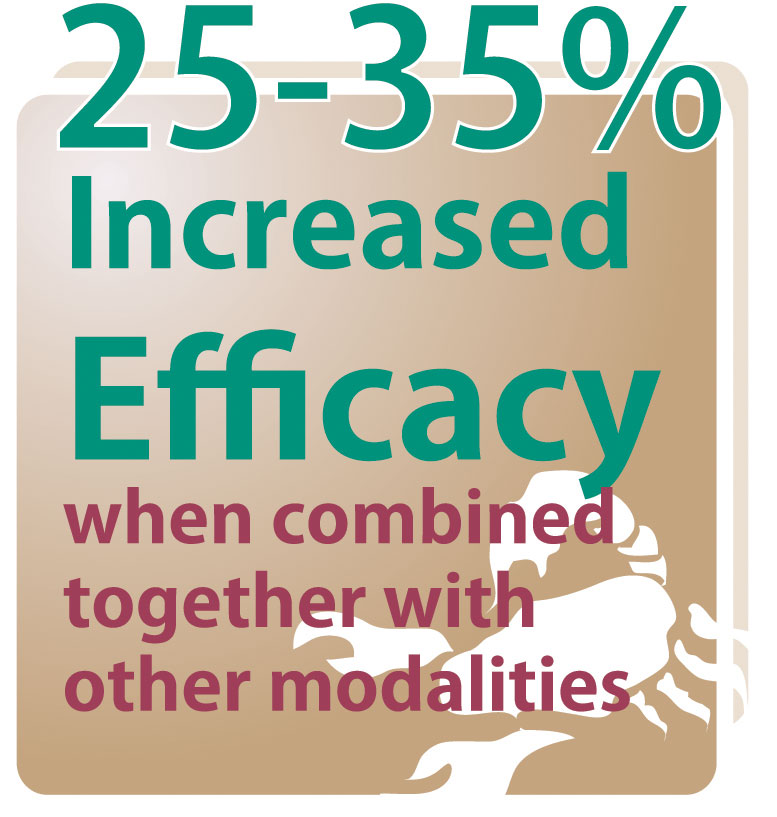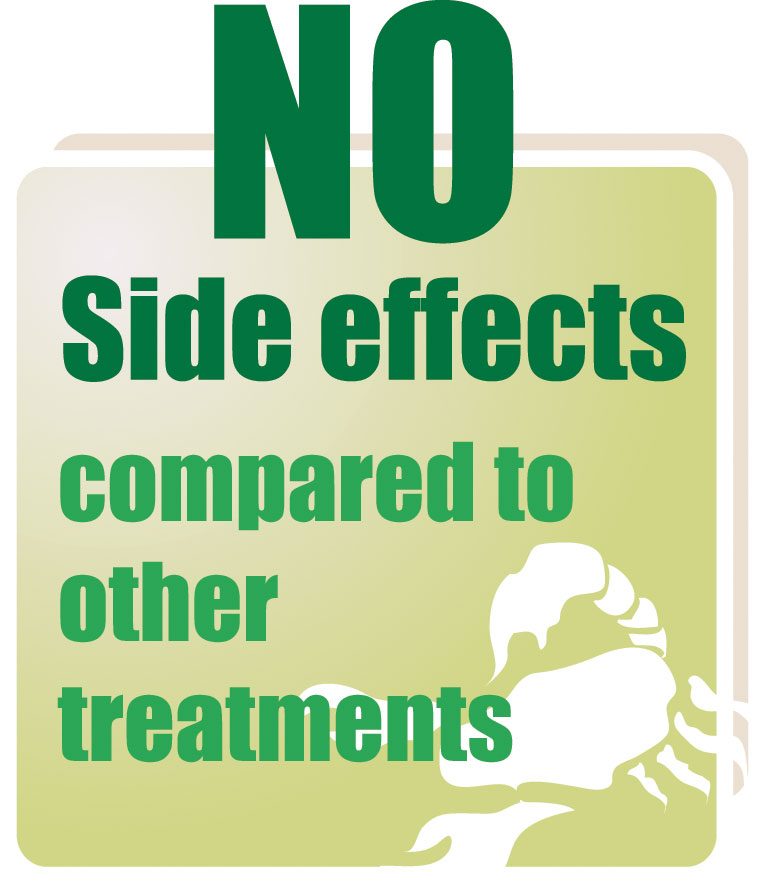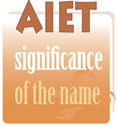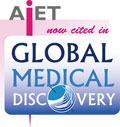Sample menu:
CHEMOTHERAPY
Chemotherapy is a treatment that uses drugs to destroy the cancer cells. They function by targeting those cells that divide quickly and they stop or slow down the division of these cells. As cancer cells divide rapidly they become target to these drugs and thereby destroyed.
Chemotherapy has one major disadvantage. These drugs will also harm the healthy cells that divide rapidly and thereby cause a lot of side effects.
RADIOTHERAPY OR RADIATION THERAPY:
Radiotherapy uses high energy radiation like the x rays, gamma rays and charged particles to kill the cancer cells by damaging their DNA. Cancer cells whose DNA is damaged beyond repair stop dividing or die and are broken down or eliminated.
The radiation will be delivered either by a machine outside the body known as external beam radiation therapy or from a radioactive material implanted in the body near the cancer cells known as brachytherapy. Systemic Radiation therapy is also a type of Radiotherapy in which radioactive substances are administered which will travel in the blood and kill the cancer cells.
Radiotherapy also has many side effects as the radiation will affect the normal cells too. They include fatigue, loss of hair, salivary gland damage, skin problems, fibrosis, diarrhea ,bleeding, memory loss, infertility and rarely a second cancer caused by radiation exposure
SURGERY:
Surgery is one of the oldest treatments available for cancer. It may be used alone or in combination with chemotherapy or radiotherapy. Surgery can be used to eliminate tumors that have not metastasized to other parts of the body. Surgical resection of tumor has its own side effects. Recurrence of tumor after surgery is very common.
Hyperthermia is a time tested treatment which exactly attacks the "Achilles tendon" of cancer cells, i.e cancer cells are vulnerable to a higher temperature and they die at 42 degree celcius whereas normal cells don't. Therefore the "HYTEM for Cancer" treatment increases the temperature of the targeted tissue to a higher level where cancer cells get killed while the normal cells remain unaffected. The HYTEM for Cancer is based on this principle and uses the Thermotron RF8 which is again a unique technology developed and in practice in Japan for more than three decades. This method uses a specific Eight Mega Hertz radio frequency thereby targeting the focused area without any heat related damage to the tissue lying above or below or in the surroundings.
ANTI-ANGIOGENIC AGENTS:
Blood supply is important for a tumor to progress and spread. When a tumor grows, new blood vessels sprout in the region of tumor and helps in providing nutrition for the cancer cells to grow and invade neighboring tissues. helps cancer cells to invade neighboring tissues.Also certain cancer cells are carried by the blood stream and this helps certain cancer to metastasize to other parts of the body .
Hence, Anti-angiogenic agents are used for cancer treatment to stop these blood vessels from growing. They might not eliminate the cancer totally but, will help in preventing the progression of the disease.
As angiogenesis is involved in wound healing, use of anti-angiogenic agents could cause side effects due to problems with bleeding, blood clotting, heart function, the immune system, and the reproductive system.
OTHER THERAPIES AVAILABLE:
Other treatments for cancer include gene therapy, photodynamic therapy, laser therapy, bone marrow transplantation, monoclonal antibody therapies and other targeted therapies. for cancer.
Given the variable nature of cancerous cells, each cancer behaves somewhat unique. In general, a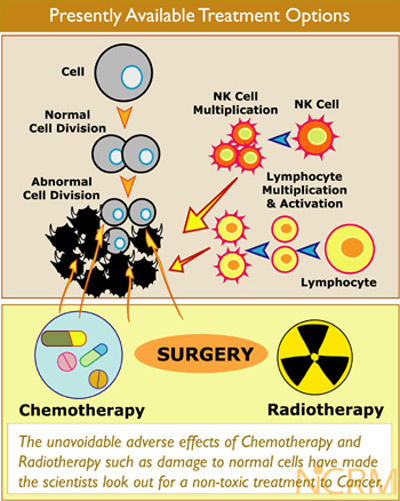 multipronged approach to cancer is vital as cancer grows at different rates and responds to different treatments and people with each specific cancer need specific combination of treatment aimed at their particular kind of cancer. When the spread of cancer is very deep, total removal of the cancer growth by surgery may not be possible. At times, after removing a portion of the cancer growth, radiotherapy and/or chemotherapy may be necessary to treat the remnant portion of cancer. It has been widely recognized that Chemotherapy of cancer has profound toxic side effects and has limitations in efficacy. Radiotherapy is also a very effective mode of treatment in certain types of cancer, with its own adverse effects as well. These two modalities affect not only the cancer affected cells, but also the normal cells
multipronged approach to cancer is vital as cancer grows at different rates and responds to different treatments and people with each specific cancer need specific combination of treatment aimed at their particular kind of cancer. When the spread of cancer is very deep, total removal of the cancer growth by surgery may not be possible. At times, after removing a portion of the cancer growth, radiotherapy and/or chemotherapy may be necessary to treat the remnant portion of cancer. It has been widely recognized that Chemotherapy of cancer has profound toxic side effects and has limitations in efficacy. Radiotherapy is also a very effective mode of treatment in certain types of cancer, with its own adverse effects as well. These two modalities affect not only the cancer affected cells, but also the normal cells
In the multipronged approach to treat cancer, the latest scientific advancement has yielded Immune therapy and cancer vaccines as well. Consequently many patients with advanced cancer opt for less toxic therapies like immuno cell therapy and cancer vaccine which are collectively known as Biological therapy.

